Ceremonial counties of England
| Counties and areas for the purposes of the lieutenancies | |
|---|---|
|
Also known as: Ceremonial county Lieutenancy area | |
 | |
| Category | Lieutenancy areas |
| Location | England |
| Number | 48 (as of 2009) |
| Populations | 8,000–8,167,000[1] |
| Areas | 3–8,611 km² |
| Densities | 62–4,806/km² |
The ceremonial counties,[2] also referred to as the lieutenancy areas of England,[3] are areas of England to which a Lord Lieutenant is appointed. Legally the areas in England, as well as in Wales and Scotland, are defined by the Lieutenancies Act 1997 as counties and areas for the purposes of the lieutenancies in Great Britain, in contrast to the areas used for local government. They are also informally known as geographic counties,[4] as often representing more permanent features of English geography, and to distinguish them from counties of England which have a present-day administrative function.
History
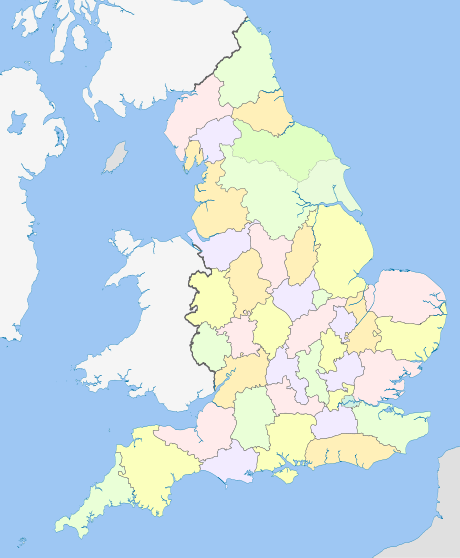
The distinction between a county for purposes of the Lieutenancy and a county for administrative purposes is not a new one: in some cases a county corporate that was part of a county was appointed its own Lieutenant (although the Lieutenant of the containing county would often be appointed to this position as well), and the three Ridings of Yorkshire had been treated as three counties for Lieutenancy purposes since the 17th century.
The Local Government Act 1888 established county councils to assume the administrative functions of Quarter Sessions in the counties. It created new entities called "administrative counties".[5] An administrative county comprised all of the county apart from the county boroughs: also some traditional subdivisions of counties were constituted administrative counties, for instance the Soke of Peterborough in Northamptonshire and the Isle of Ely in Cambridgeshire. The Act further stipulated that areas that were part of an administrative county would be part of the county for all purposes. The greatest change was the creation of the County of London, which was made both an administrative county and a "county"; it included parts of the historic counties of Middlesex, Kent, and Surrey. Other differences were small and resulted from the constraint that urban sanitary districts (and later urban districts and municipal boroughs) were not permitted to straddle county boundaries.
Apart from Yorkshire, counties that were subdivided nevertheless continued to exist as ceremonial counties. For example, the administrative counties of East Suffolk and West Suffolk, along with the county borough of Ipswich, were considered to make up a single ceremonial county of Suffolk, and the administrative county of the Isle of Wight was part of the ceremonial county of Hampshire.
The term "ceremonial county" is an anachronism—at the time they were shown on Ordnance Survey maps as "counties" or "geographical counties", and were referred to in the Local Government Act 1888 simply as "counties".
Apart from minor boundary revisions (for example, Caversham, a town in Oxfordshire, becoming part of Reading county borough and thus of Berkshire, in 1911), these areas changed little until the 1965 creation of Greater London and of Huntingdon and Peterborough, which resulted in the abolition of the offices of Lord Lieutenant of Middlesex, Lord Lieutenant of the County of London, and Lord Lieutenant of Huntingdonshire and the creation of the Lord Lieutenant of Greater London and of the Lord Lieutenant of Huntingdon and Peterborough.

In 1974, administrative counties and county boroughs were abolished, and a major reform was instituted. At this time, Lieutenancy was redefined to use the new metropolitan and non-metropolitan counties directly.
Following a further rearrangement in 1996, Avon, Cleveland, Hereford and Worcester, and Humberside were abolished. This led to a resurrection of a distinction between the local government counties and the ceremonial or geographical counties used for Lieutenancy, and also to the adoption of the term "ceremonial counties", which although not used in statute was used in the House of Commons before the arrangements coming into effect.[6]
The County of Avon that had been formed in 1974 was mostly split between Gloucestershire and Somerset, but its city of Bristol regained the status of a county in itself, which it had lost upon the formation of Avon. Cleveland was partitioned between North Yorkshire and Durham. Hereford and Worcester was divided into the restored counties of Herefordshire and Worcestershire. Humberside was split between Lincolnshire and a new ceremonial county of East Riding of Yorkshire. Rutland was restored as a ceremonial county. Many county boroughs were re-established as "unitary authorities"; this involved establishing the area as an administrative county, but usually not as a ceremonial county.
Most ceremonial counties are therefore entities comprising local authority areas, as they were from 1889 to 1974. The Association of British Counties, a traditional counties lobbying organisation, has suggested that ceremonial counties be restored to their ancient boundaries, as nearly as practicable.
Shrieval counties
In present-day England, the ceremonial counties correspond to the shrieval counties, each with a high sheriff appointed (except the City of London which has its two sheriffs).
Definition
The Lieutenancies Act 1997 defines counties for the purposes of lieutenancies in terms of metropolitan and non-metropolitan counties (created by the Local Government Act 1972, as amended) as well as Greater London and the Isles of Scilly (which lie outside the 1972 Act's new system). Although the term is not used in the Act, these counties are sometimes known as "ceremonial counties". The counties are defined in Schedule 1, paragraphs 2–5[7] as amended[8] (most recently in 2009[9]) — it should be noted however that these amendments have not altered the actual areas covered by the counties as set out in 1997, only their composition in terms of local government areas, as a result of structural changes in local government.[N 1]
Ceremonial counties since 1997
The following are the ceremonial counties of England, as presently defined:
-
 Bedfordshire, consisting of Bedford, Central Bedfordshire and Luton
Bedfordshire, consisting of Bedford, Central Bedfordshire and Luton -
 Berkshire
Berkshire -
 Bristol
Bristol -
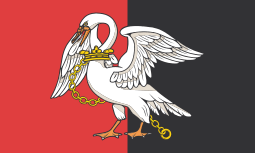 Buckinghamshire, including Milton Keynes
Buckinghamshire, including Milton Keynes -
 Cambridgeshire, including Peterborough
Cambridgeshire, including Peterborough -
 Cheshire, consisting of Cheshire East, Cheshire West and Chester, Halton and Warrington
Cheshire, consisting of Cheshire East, Cheshire West and Chester, Halton and Warrington -
 City of London[N 2]
City of London[N 2] -
 Cornwall, including the Isles of Scilly
Cornwall, including the Isles of Scilly -
 Cumbria
Cumbria -
 Derbyshire, including Derby
Derbyshire, including Derby -
 Devon, including Plymouth and Torbay
Devon, including Plymouth and Torbay -
 Dorset, including Bournemouth and Poole
Dorset, including Bournemouth and Poole -
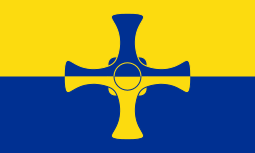 Durham, including Darlington, Hartlepool, and Stockton-on-Tees north of the River Tees
Durham, including Darlington, Hartlepool, and Stockton-on-Tees north of the River Tees -
 East Riding of Yorkshire, including Kingston-upon-Hull
East Riding of Yorkshire, including Kingston-upon-Hull -
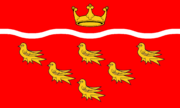 East Sussex, including Brighton and Hove
East Sussex, including Brighton and Hove -
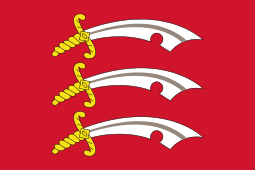 Essex, including Southend-on-Sea and Thurrock
Essex, including Southend-on-Sea and Thurrock -
 Gloucestershire, including South Gloucestershire
Gloucestershire, including South Gloucestershire -
 Greater London, excluding the City of London
Greater London, excluding the City of London -
 Greater Manchester
Greater Manchester -
 Hampshire, including Portsmouth and Southampton
Hampshire, including Portsmouth and Southampton -
 Herefordshire
Herefordshire -
Hertfordshire
-
 Isle of Wight
Isle of Wight -
 Kent, including Medway
Kent, including Medway -
Lancashire, including Blackburn with Darwen, and Blackpool
-
 Leicestershire, including Leicester
Leicestershire, including Leicester -
 Lincolnshire, including North Lincolnshire, and North East Lincolnshire
Lincolnshire, including North Lincolnshire, and North East Lincolnshire -
 Merseyside
Merseyside -
 Norfolk
Norfolk -
 North Yorkshire, including Middlesbrough, Redcar and Cleveland, York, and Stockton-on-Tees south of the River Tees
North Yorkshire, including Middlesbrough, Redcar and Cleveland, York, and Stockton-on-Tees south of the River Tees -
 Northamptonshire
Northamptonshire -
 Northumberland
Northumberland -
 Nottinghamshire, including Nottingham
Nottinghamshire, including Nottingham -
 Oxfordshire
Oxfordshire -
 Rutland
Rutland -
 Shropshire, including Telford and Wrekin
Shropshire, including Telford and Wrekin -
 Somerset, including Bath and North East Somerset and North Somerset
Somerset, including Bath and North East Somerset and North Somerset -
 South Yorkshire
South Yorkshire -
 Staffordshire, including Stoke-on-Trent
Staffordshire, including Stoke-on-Trent -
 Suffolk
Suffolk -
 Surrey
Surrey -
 Tyne and Wear
Tyne and Wear -
 Warwickshire
Warwickshire -
 West Midlands
West Midlands -
 West Sussex
West Sussex -
 West Yorkshire
West Yorkshire -
 Wiltshire, including Swindon
Wiltshire, including Swindon -
 Worcestershire
Worcestershire
Lieutenancy areas in 1890
- Bedfordshire
- Berkshire
- Buckinghamshire
- Cambridgeshire, including Isle of Ely
- Cheshire
- held jointly with Chester
- Cornwall
- Cumberland
- Derbyshire
- Devon
- held jointly with Exeter
- Dorset
- held jointly with Poole
- Durham
- Essex
- Gloucestershire
- held jointly with Gloucester and Bristol
- Hampshire
- held jointly with Southampton
- Herefordshire
- Hertfordshire
- Huntingdonshire
- Kent
- held jointly with Canterbury
- Lancashire
- Leicestershire
- Lincolnshire
- held jointly with Lincoln
- City of London, having commissioners of Lieutenancy
- County of London
- Middlesex
- Norfolk
- held jointly with Norwich
- Northamptonshire, including the Soke of Peterborough
- Northumberland
- held jointly with Berwick-upon-Tweed and Newcastle upon Tyne
- Nottinghamshire
- held jointly with Nottingham
- Oxfordshire
- Rutland
- Shropshire
- Somerset
- Staffordshire
- held jointly with Lichfield
- Suffolk
- Sussex
- Warwickshire
- Westmorland
- Wiltshire
- Worcestershire
- held jointly with Worcester
- Yorkshire—had three Lieutenants, one for each of the three ridings
- East Riding, held jointly with Kingston upon Hull
- North Riding
- West Riding, held jointly with York
See also
- Counties of England
- Historic counties of England
- Counties of the United Kingdom
- Lieutenancy areas of Scotland
- List of ceremonial counties of England
- List of local governments in the United Kingdom
- Nomenclature of Territorial Units for Statistics
- Preserved counties of Wales
References
- ↑ [Table 2 2011 Census: Usual resident population and population density, local authorities in the United Kingdom UK Census 2011 UK usual resident population Greater London excluding City of London], Accessed 22 December 2012
- ↑ Ordnance Survey
- ↑ http://www.legislation.gov.uk/ukpga/1997/23/schedule/1
- ↑ e.g. Encyclopaedia Britannica
- ↑ "Local Government Act 1888 s.1" (PDF). Her Majesty's Stationery Office. Retrieved 30 April 2012.
- ↑ House of Commons Hansard Written Answers for 29 Feb 1996 (pt 8) Archived March 3, 2006, at the Wayback Machine.
- ↑ Text of the Lieutenancies Act 1997 – Schedule 1: Counties and areas for the purposes of the lieutenancies in Great Britain as in force today (including any amendments) within the United Kingdom, from legislation.gov.uk Last accessed:2011-05-03
- ↑ Text of the Lord-Lieutenants – The Local Government Changes for England (Lord-Lieutenants and Sheriffs) Order 1997 as originally enacted or made within the United Kingdom, from legislation.gov.uk Last accessed:2011-05-03
- ↑ Text of The Local Government (Structural Changes) (Miscellaneous Amendments and Other Provision) Order 2009 (SI 2009/837) as originally enacted or made within the United Kingdom, from legislation.gov.uk Last accessed:2011-05-03
Notes
- ↑ For example, Cheshire was prior to the 2009 structural changes to local government defined as the non-metropolitan counties of Cheshire, Halton & Warrington; the non-metropolitan county of Cheshire on the 1 April that year split into the non-metropolitan counties of Cheshire East & Cheshire West and Chester, and Schedule 1 of the Lieutenancies Act 1997 was duly amended to take into account these changes to local government within the ceremonial county.
- ↑ Because the City of London has a Commission of Lieutenancy rather than a single Lord Lieutenant, it is treated as a county for some but not all purposes of the Lieutenancy Act (Schedule 1 paragraph 4)
External links
- Text of the Lieutenancies Act 1997 as in force today (including any amendments) within the United Kingdom, from legislation.gov.uk